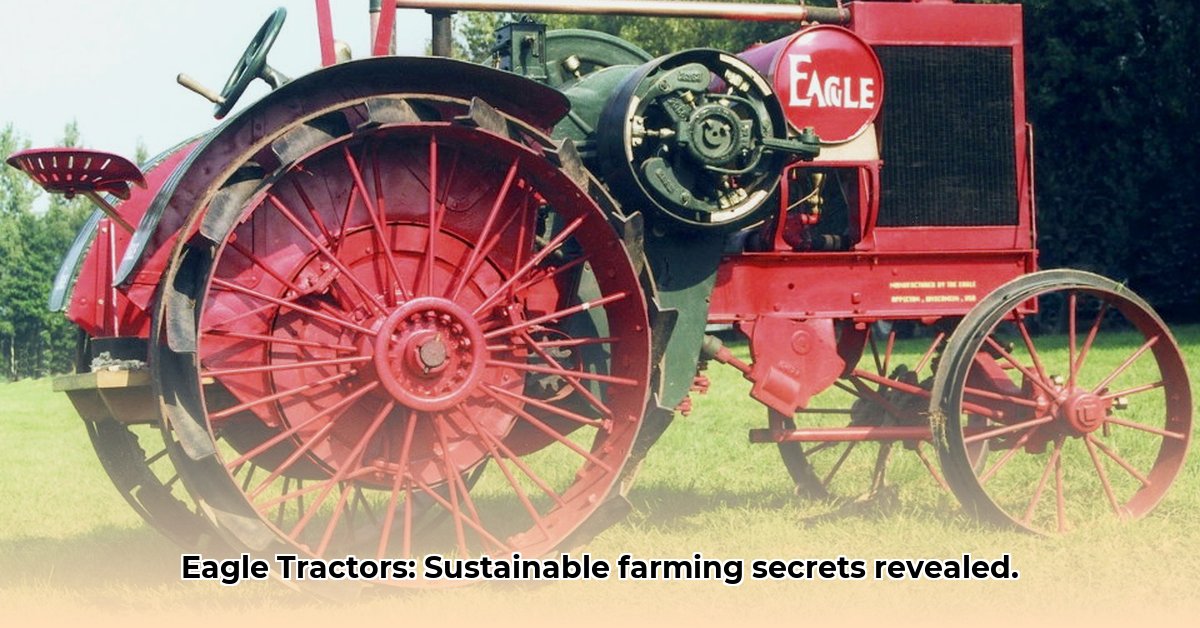
Eagle Tractor: A Story of Innovation, Adaptation, and the Seeds of Sustainability
The roar of the internal combustion engine revolutionized American agriculture in the early 20th century. Eagle Manufacturing, a prominent player, quickly established itself by producing powerful, two-cylinder tractors. Imagine these behemoths, churning across vast fields from approximately 1906 to 1930 – iconic symbols of an era focused on large-scale farming. But did these giants pave the way for sustainable farming, or did their very existence sow the seeds of future environmental problems? This case study delves into Eagle's history to explore this compelling question. While these early tractors undeniably boosted crop yields, their size and power raised concerns about soil compaction and fuel consumption – issues remarkably relevant today. How did Eagle's technological choices shape its legacy, and what lessons can we glean for modern sustainable agriculture? For alternative farming methods, see this example of sustainable agriculture.
Riding the Agricultural Wave: Early Successes and the Challenges of Growth
Eagle’s early success stemmed from producing robust tractors capable of meeting the demands of large farms. These were powerful machines, likely boasting substantial horsepower (though precise figures remain elusive), designed for plowing, tilling, and harvesting on an unprecedented scale. This technological leap significantly increased productivity, benefiting farmers and bolstering the nation's food supply. However, this initial triumph masked potential long-term problems. The sheer size and weight of these tractors likely contributed to soil compaction, impacting soil health and long-term fertility, according to agricultural historians. Furthermore, these early models probably consumed large amounts of fuel, raising environmental concerns even before widespread environmental awareness. How impactful was this fuel consumption, and did Eagle attempt to mitigate it? Further research is needed to properly assess this aspect of their operations.
Shifting Gears: Adapting to a Changing Market
By the 1930s, the agricultural landscape was transforming dramatically. The era of massive farms gradually gave way to smaller, family-run operations. This market shift forced Eagle to adapt its strategy. They attempted to produce smaller, more manageable tractors, often incorporating engines from other manufacturers. This diversification strategy was a clear attempt to reach a broader customer base and compete with a growing number of tractor companies. However, this pivot proved insufficient to save the company; Eagle Manufacturing closed its doors in 1938. While precise financial details are scarce, their demise underscores the importance of adapting to market forces and achieving profitability in a competitive environment. Their story shows how even innovative companies can falter if they fail to effectively respond to evolving market needs. What specific market factors beyond the shift in farm size contributed to the company's decline? Analysis of contemporary business records could illuminate these dynamics.
An Unsustainable Legacy? Examining Eagle's Environmental Footprint
A significant challenge in evaluating Eagle’s legacy lies in the scarcity of information regarding their environmental practices. Did they consider the long-term impact of their manufacturing processes? What materials did they prioritize? Did they implement any waste management strategies? These questions remain largely unanswered. The absence of documented environmental consciousness is noteworthy, highlighting a general disregard for the broader environmental consequences of industrial activity prevalent in the early 20th century. A comprehensive life-cycle analysis – from raw material extraction to machine disposal – is needed to fully assess the sustainability of Eagle tractors. This represents a crucial area for future research. What specific archival resources could yield further insights into Eagle's environmental practices? A systematic investigation of company records and contemporary industry publications may be fruitful.
Lessons Harvested: What Eagle Teaches Us About Sustainable Agriculture
The Eagle Tractor case study offers valuable insights into agricultural innovation and the complexities of sustainable business practices. Their initial success underscores the importance of technological advancement in improving farming efficiency. However, their failure highlights the equally critical need for adaptability, sound business judgment, and proactive resource management. Eagle's story emphasizes the importance of considering the broader environmental and social implications of our choices, not just immediate economic benefits. It also demonstrates the critical need for thorough record-keeping in industrial and agricultural practices. This meticulous documentation is essential for learning from past mistakes and preventing their recurrence. What specific policies or practices could modern agricultural businesses implement to learn from Eagle's experience? A comparative analysis of successful sustainable agricultural businesses would be valuable.
Key Takeaways:
- Early tractors revolutionized farming but often negatively impacted soil health due to compaction and fuel consumption.
- Eagle Tractor’s failure illustrates the consequences of neglecting sustainable practices in agricultural technology.
- Sustainable agriculture demands a holistic approach, balancing efficiency with environmental responsibility.
- The evolution of tractor technology demonstrates both the advancement and challenges of mechanization.
- Understanding the past provides valuable insights to achieve sustainable agriculture.